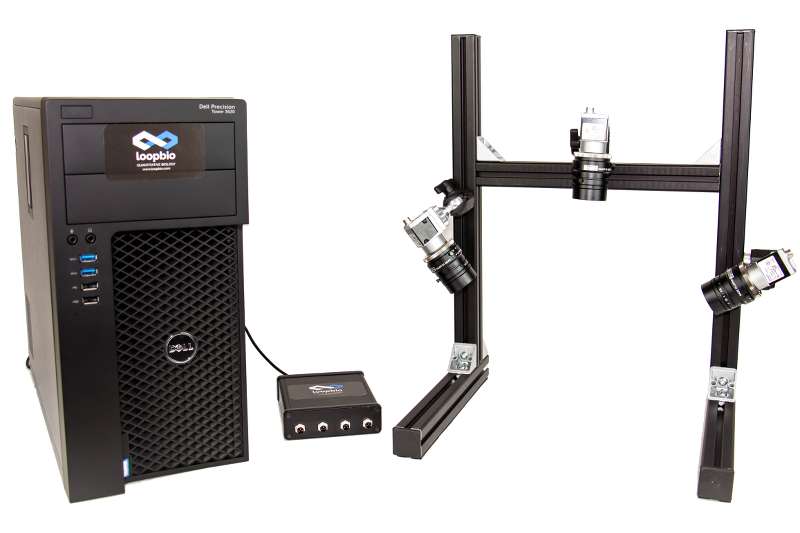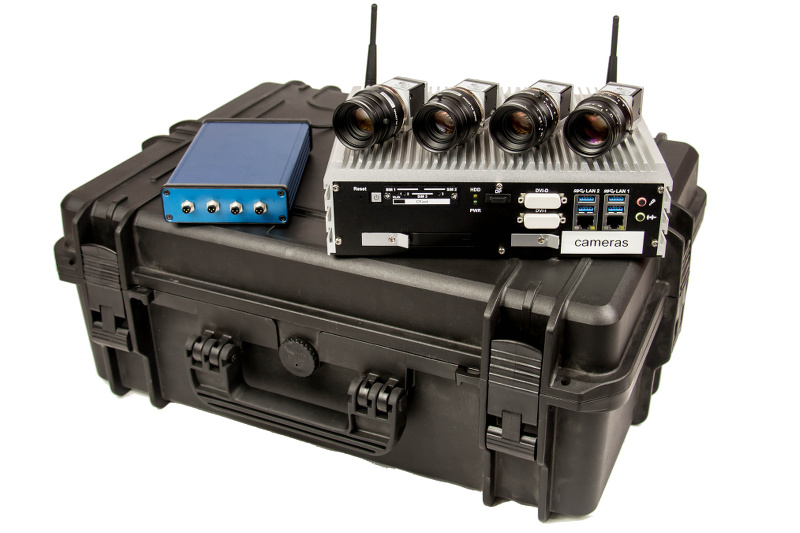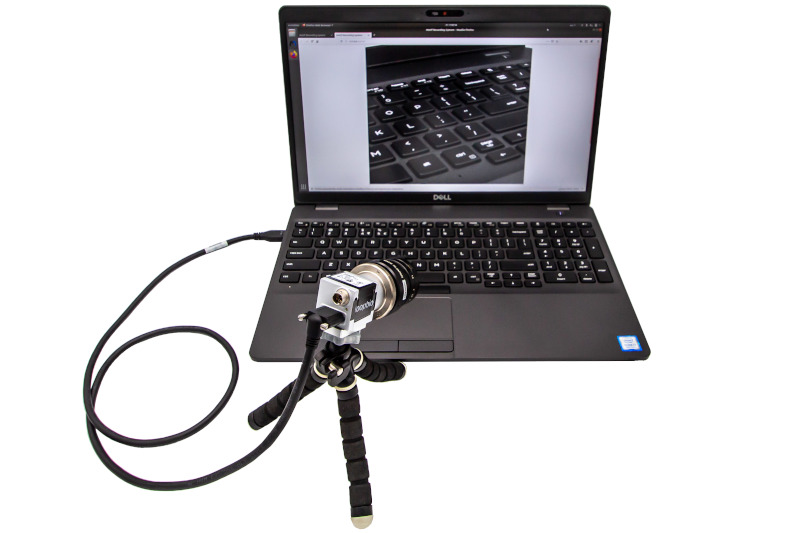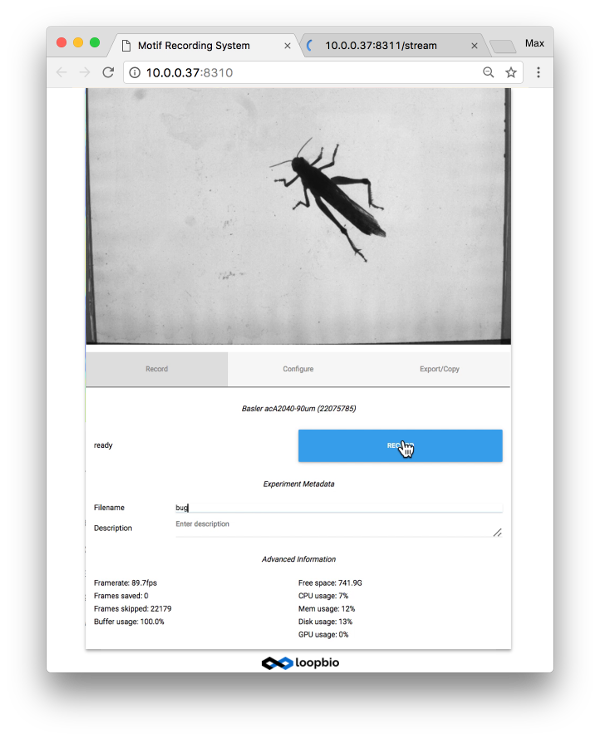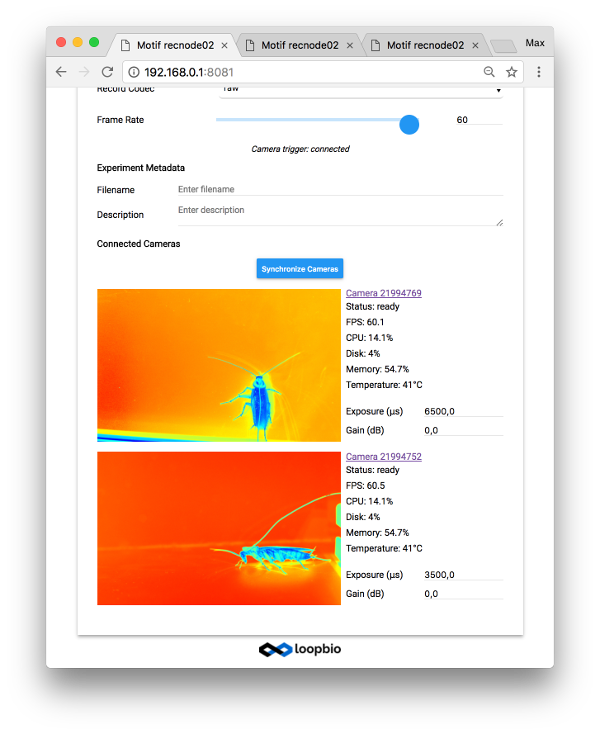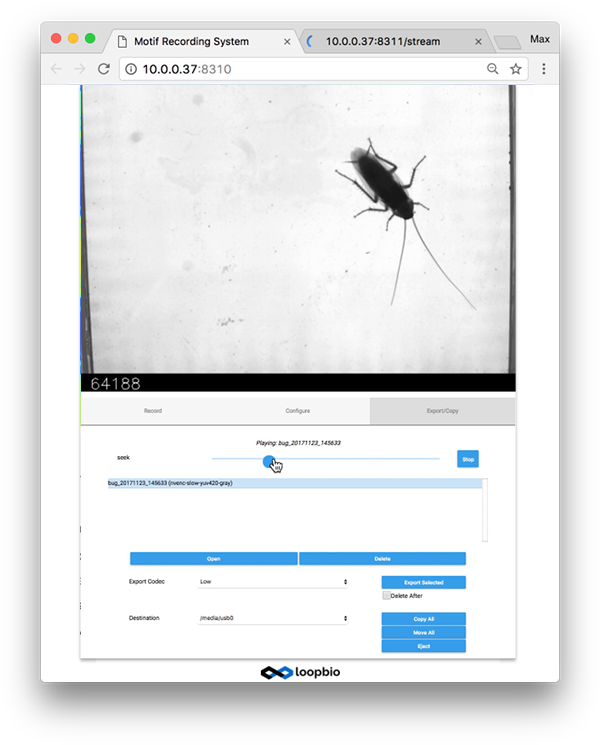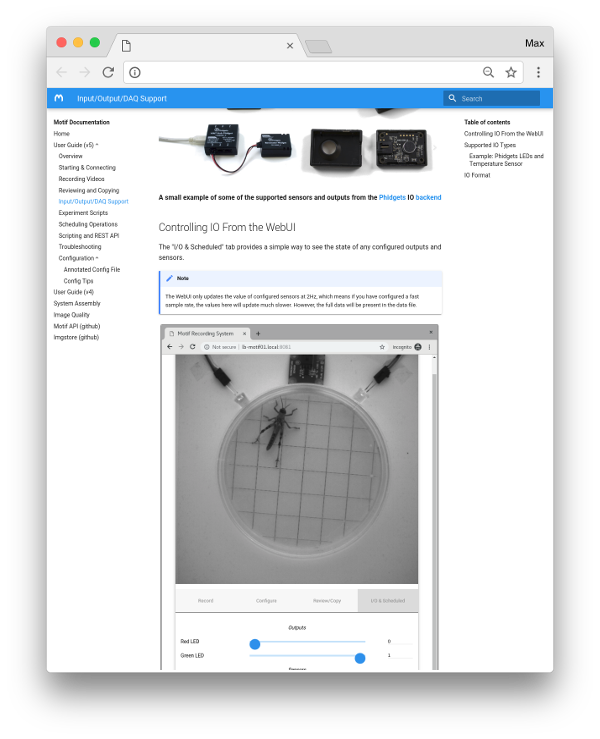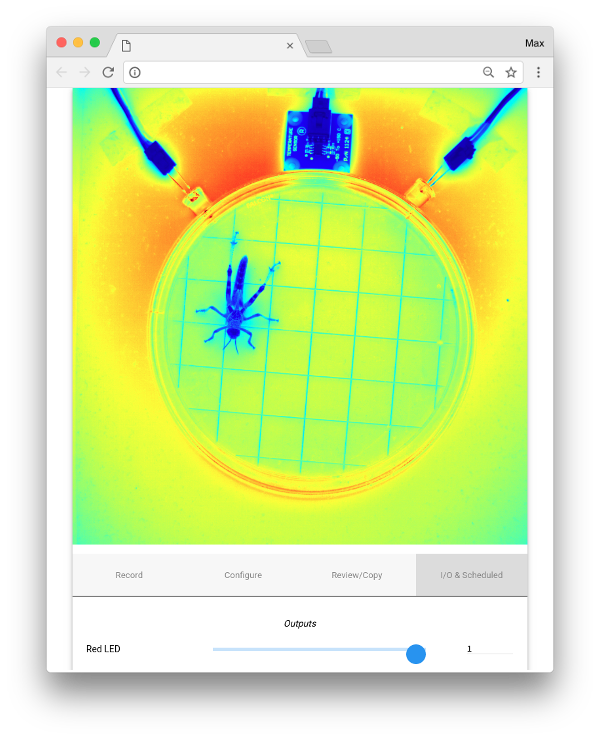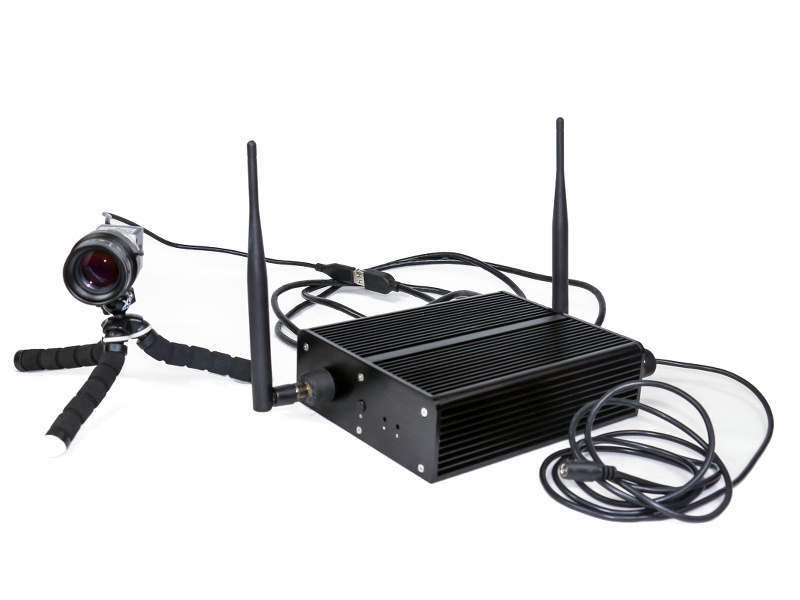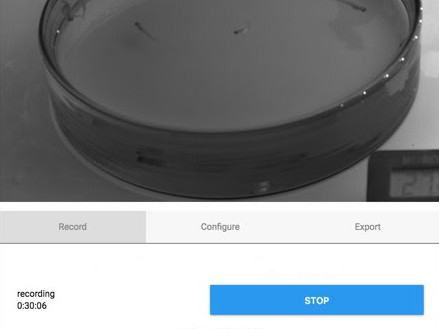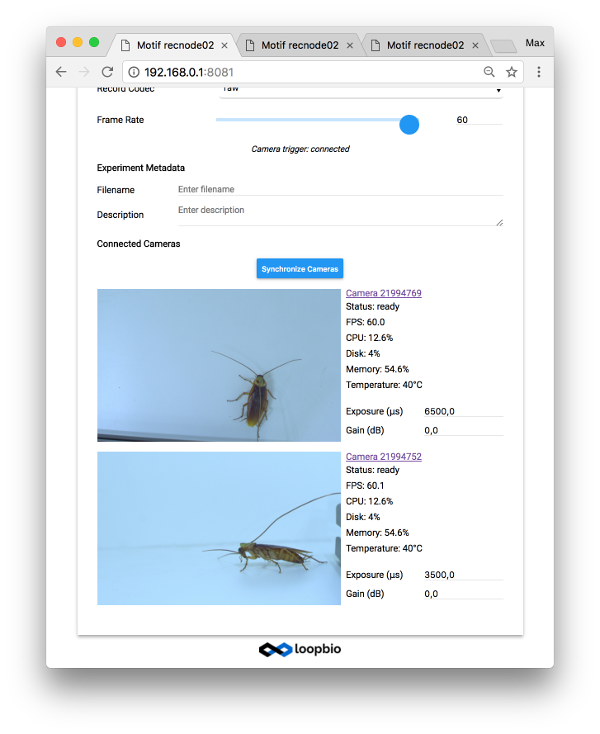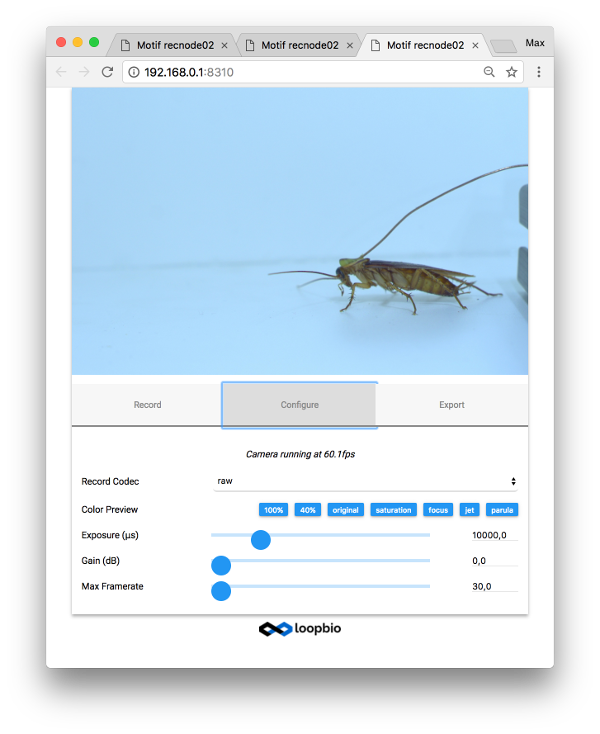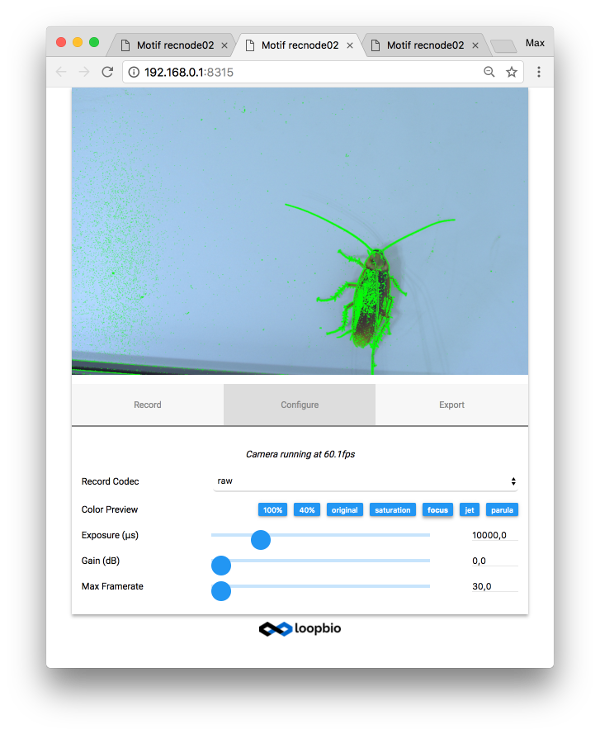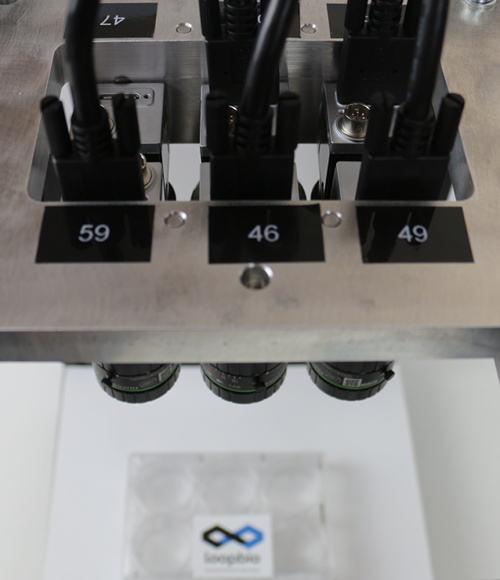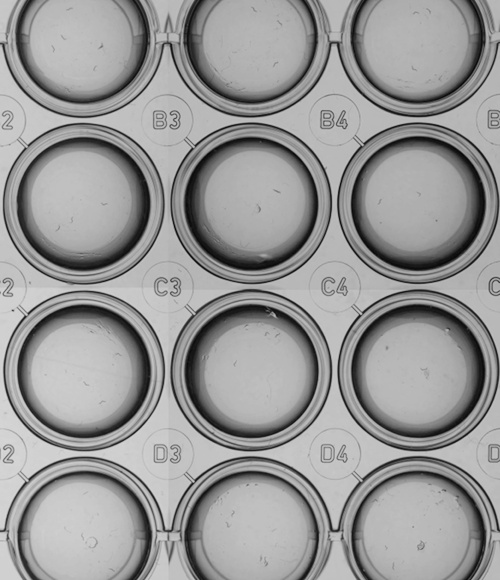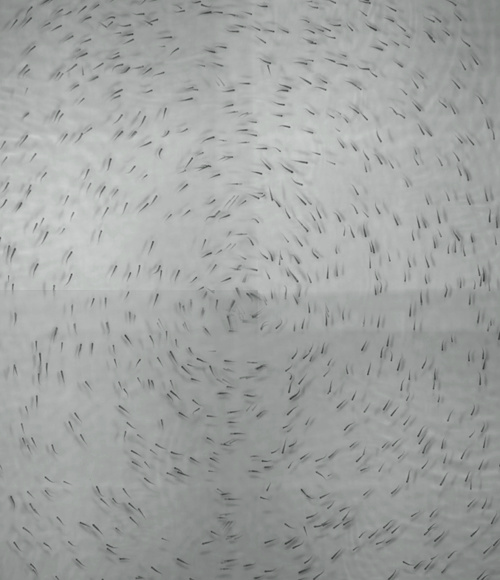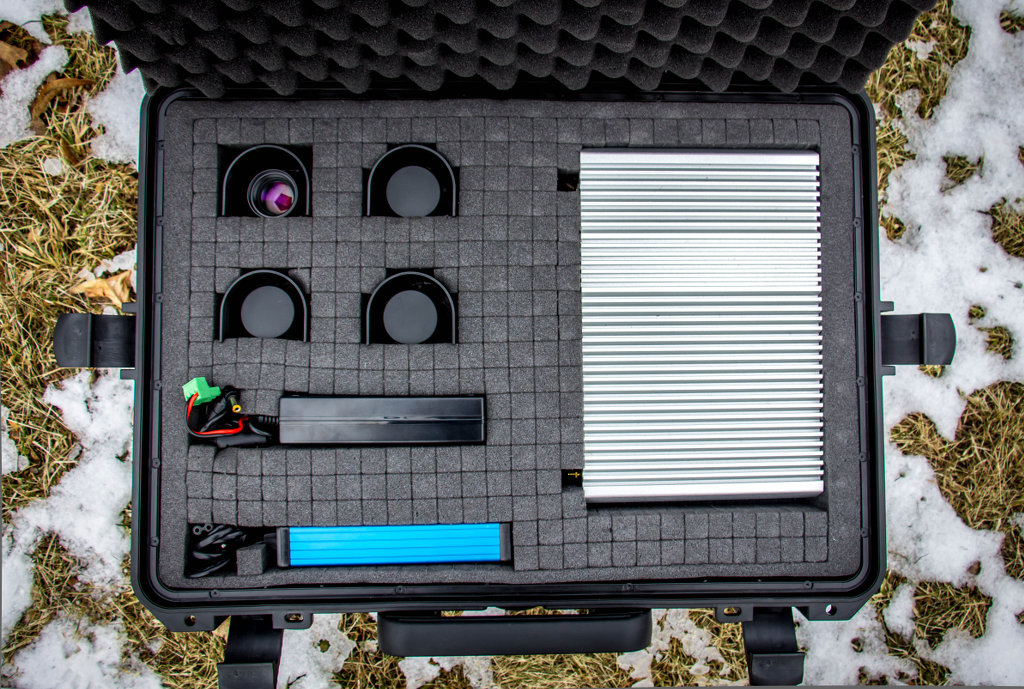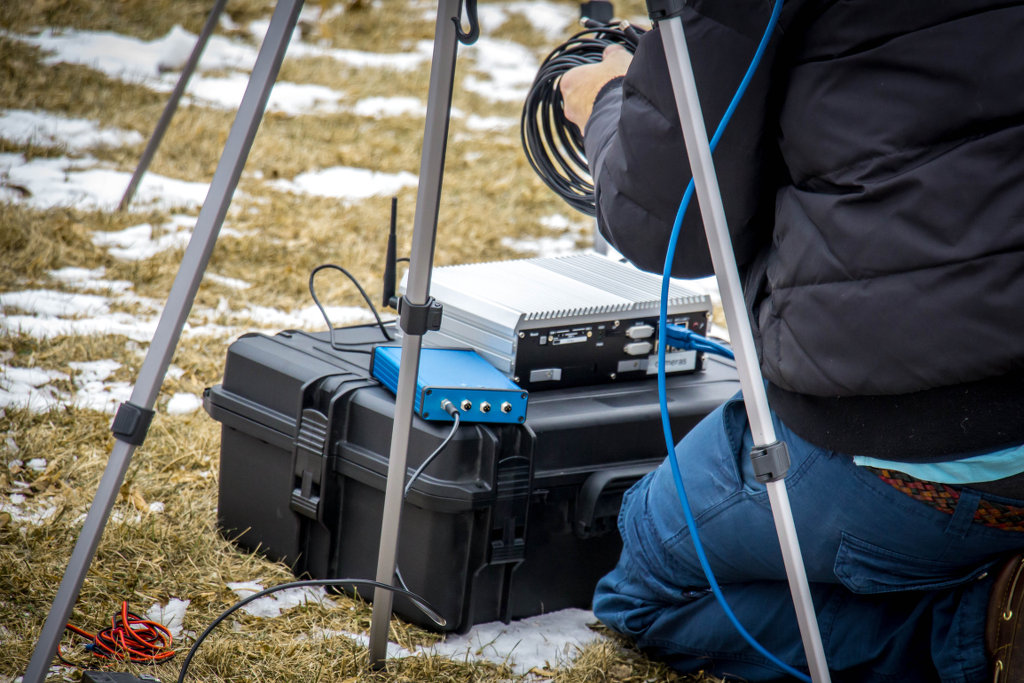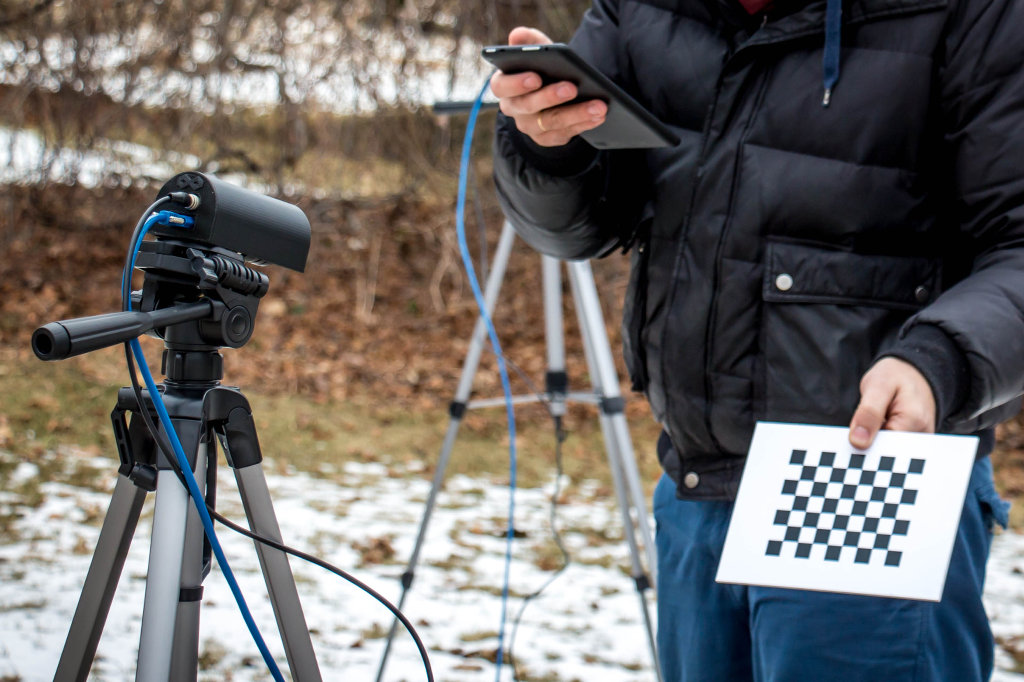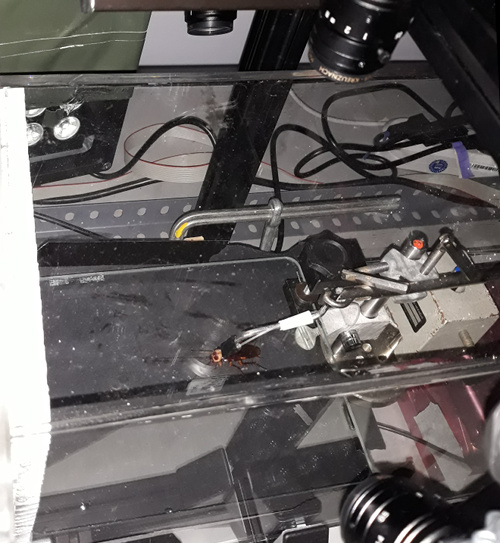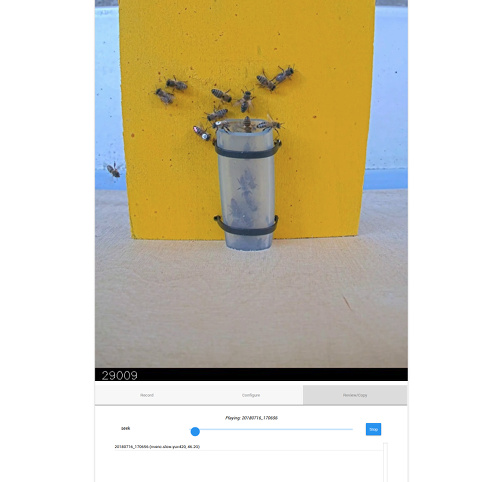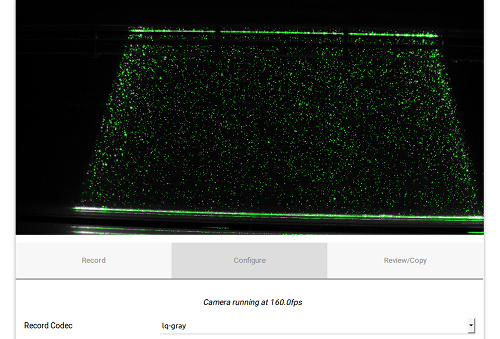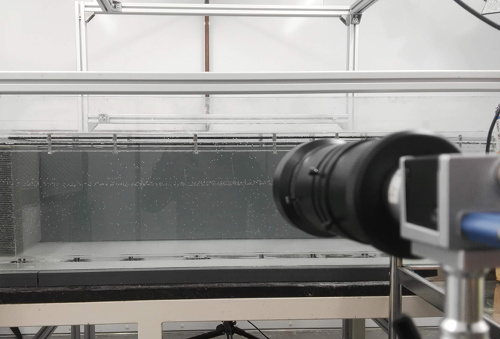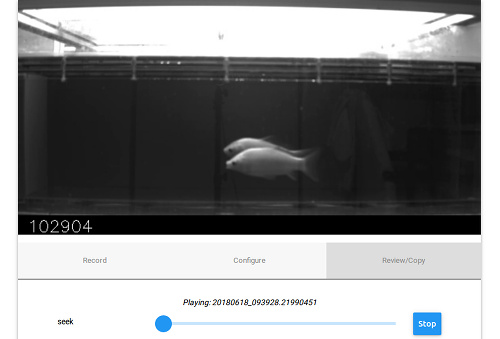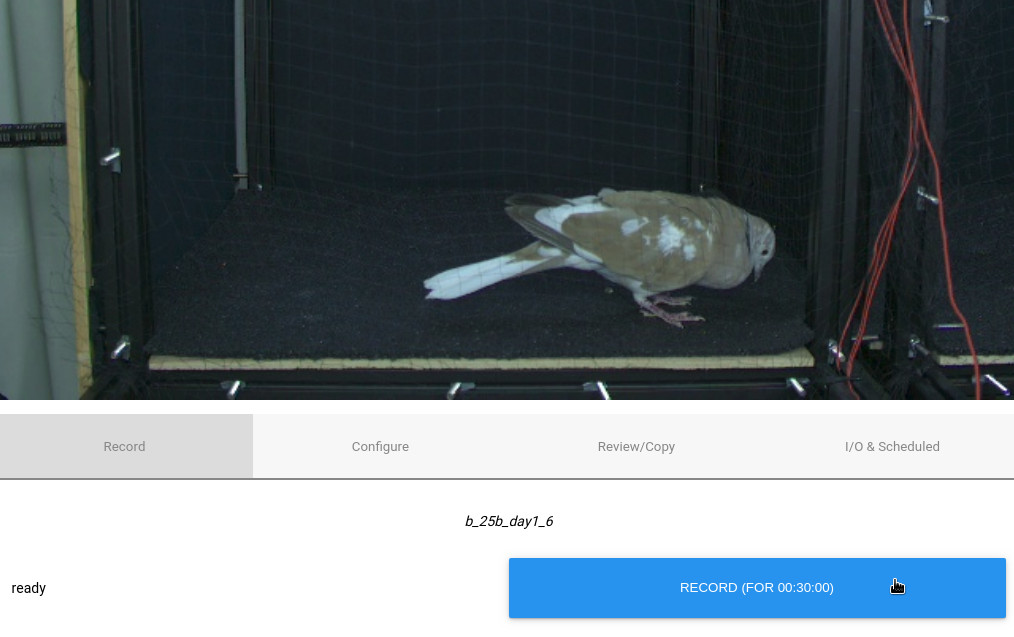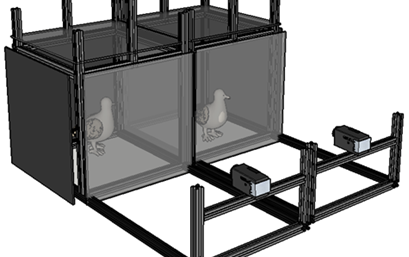
Motif - Video Recording System
Motif is a video recording software offered as a complete system (software, camera, and computer together) for laboratory and field use. Designed specifically for the needs of quantitative biology research, Motif supports recording at exceptional image quality and at higher frame rates and resolutions than competing products. Motif can compress video in real-time to save on storage costs.
Good science needs good quality data. If you are a scientist and want to improve the quality of your video, reduce costs and save you time, Motif is perfect for you. For examples of how Motif is used by other scientists, check out the sample applications below.
Motif can be configured for single camera or multiple camera recording, and video recordings can be from seconds to weeks in duration. Multiple cameras can be connected to one PC, and multiple Motif systems can be connected together to record even larger spaces, or to record multiple views of the same experiment.
For pre-assembled assays including Motif, an enclosure, lighting, and optional optogenetic stimulus check out Kastl - Automated Observation Box.
Motif Key Features
- Extremely high quality. Recordings can be saved in many formats, raw, with lossless compression, or with exceptional quality industry standard h264/h265 codec (at qualities exceeding blue-ray)
- Other quantitative data (such as EEG, behavioral, or environmental measurements) can be recorded and easily synchronized with the video at sub-millisecond precision using our open source imgstore recording format
- Web-based user interface. Using your web browser, you can configure recording parameters and monitor experiment progress remotely using any Internet connected device (laptop, phone, or tablet)
- Unlimited recording duration. Videos can be as long as your experiment, no file-size or other artificial limits
- Experiment metadata and environmental measurements can be recorded in addition to the video
- Designed to be integrated with your IT infrastructure to ensure movies are backed up and saved on group network storage
- Synchronized capture of images from multiple cameras - ideal for 3D reconstruction or the creation of larger camera arrays
- Live feedback of camera and lighting configuration, including lighting uniformity and focus
- No per-user licenses. A Motif system can be used by the whole lab without extra cost
- Always up to date. New releases and bug-fix updates are automatically and instantly made available to users at no cost
- All Motif systems can be securely and programatically remote controlled using a simple HTTP interface (a Python library is also provided). The interface allows control and scheduling recordings, adjusting video parameters and much more
- Comprehensive documentation is provided online
- Input/Output support allows controling stimulus, measuring environmental data (temperature, light, humidity, etc, and viewing these values from the user interface
- Multiple camera manufacturers are supported, we can help you select the correct camera and lens for your application from Basler, FLIR, Ximea and many more
- Realtime image processing can be integrated with Motif to allow closed loop experiments. Image processing algorithms run in another program, separate to Motif, which improves stability - Motif will always record data reliably
- Experimental protocols, such as time and duration of recordings, stimulus (using Motif I/O support), and copying of data, can be defined once and run by Motif automatically
- No per-camera licences. Motif does not artificially restrict how many cameras you can use with a system (although optimal performance is constrained by PC hardware, number and configuration of cameras)
Demonstration Video
Example Frame Rate and Resolution Options

Motif can be used with a number of different cameras with resolution and frame rate combinations including, but not limited to, the following:
- 800x600px, 500 fps
- 1920x1200px, 155 fps
- 2046x2046px, 90fps (up to 200 fps)
- 4112x3008px, 31 fps (up to 89 fps)
- 4504x4504px, 18 fps (up to 54 fps)
- 5320x4600px, 15fps (up to 45 fps)
Note: decreasing the frame rate yields an increase in the possible resolution, for example, reducing the resolution to VGA 640x480 allows recording at 390 fps, at 592x400px 1000fps is achievable.
Microscopy and High Magnification Applications
Motif is frequently used in microscope-like applications, imaging for example; larvae, C. elegans or bacteria from multi-well plates. Configurations of 100 px/mm for all wells in a multi-well plate, or 140px/mm for a single well (6-well plate) are possible at framerates of > 20fps.
For more information on systems of this nature, see our C. elegans case study or or our fluorescence imaging kastl.
Single or Multiple Camera Configurations
Motif systems are available in a number of configurations, from traditional single-camera systems, to multiple camera variations suitable for operation in the field or in the lab.
Multiple camera support is a unique aspect of the Motif system design - not only are multiple cameras per system supported, but multiple Motif systems can be connected together, effectively scaling the apparatus to a larger area. Imagine a behavioral arena too large to record with sufficient resolution using one camera, or imagine an experiment where one needs images taken from different perspectives. These situations are no problem with Motif as each cameras' image acquisition is synchronized - all pictures are taken at exactly the same time, overcoming the limitations of resolution and framerate.
Contact us to discuss how Motif can meet your imaging needs, integrate with your experiments, or for an evaluation.
If you are looking for support, you can email us or consult our documentation.
Motif Sample Configurations
Single Camera Laboratory Assay
The silent computer and camera can be mounted near the behavioral assay and the experiment monitored and recorded remotely using the Motif web user interface.
Multiple Camera Laboratory Configuration
Recording synchronized videos from multiple cameras allows studying kinematics and motion in great detail. Here we show the two orthogonal views of a subject.
With live feedback of focus quality, Motif ensures that images are sharp and that the focus plane is correctly set.
Multiple Camera Array
Sometimes recording an experiment requires higher resolution, framerate, or covering a larger area, than what is economically possible using a single camera.
A unique feature of Motif is it supports the combinations of multiple cameras into a single higher performance virtual camera. This allows unmatched recording performance. For more information see our case studies 'A multi-camera high throughput worm assay' and 'a 3x3m 4-camera array for recording fish schooling'.
Sample Applications
In addition to the brief examples below we have a number of case studies describing Motif systems including: a multi-camera high throughput worm assay, courtship recordings, in the Panama jungle, of Manacus vitellinus, circadian analysis of Platynereis, and single- and multiple-camera array recordings of collective behavior in fish.
Multiple Month Continuous Recording
Motif is used to record the foraging and life of an entire bee colony, recording 24/7 for 3 months. This data can then be used to understand the social behavior of honey bees and and how it changes through a season. See our case study on 'continuous high-resolution recording of honey bee hives'.
Two Motif systems are used; one records from 4x 12 MP USB3 cameras observing the hives, the second records from a network camera mounted outside.
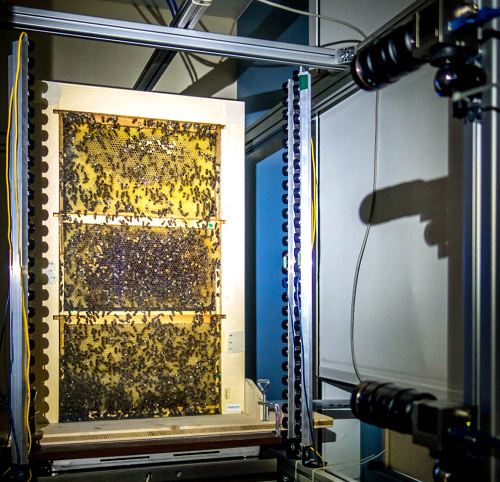
Each observation hive is observed by two cameras (see more).
Particle Image Velocimetry
To understand the kinematics of swimming fish, a 2-camera Motif system records their swimming behavior in a flow tank with a laser illuminated light-sheet to quantify the flow.
Kinematics of Dove Courtship
Doves perform a courtship display prior to mating, and it is believed that this carries information females use in assessing mate quality.
A 4-camera system captures high speed synchronized video to correlate the kinematics of behavior with the success of the courtship display.
Publications
- Völter C., Lonardo L., Steinmann M. G., Ramos C. F., Gerwisch K., Schranz M.T., Dobernig I., Huber L Unwilling or unable? Using three-dimensional tracking to evaluate dogs' reactions to differing human intentions. Proceedings of the Royal Society B (2023). 10.1098/rspb.2022.1621
- Neubauer, L. C., Davidson, J. D., Wild, B., Dormagen, D. M., Landgraf, T., Couzin, I. D., & Smith, M. L. Honey bee drones are synchronously hyperactive inside the nest. arXiv (2023). 10.1101/2023.01.19.524638
- Pereira T.D. et al. SLEAP: A deep learning system for multi-animal pose tracking Nature Methods (2022). 10.1038/s41592-022-01426-1
- Hoffmann, A., Couzin-Fuchs, E. Active smelling in the American cockroach arXiv (2022). 10.1101/2022.11.23.517676
- Smith, M. L., Davidson, J. D., Wild, B., Dormagen, D. M., Landgraf, T., & Couzin, I. D. Behavioral variation across the days and lives of honey bees. iScience (2022). 10.1016/j.isci.2022.104842
- Njume, F. N. et al. A Lipid Transfer Protein Ensures Nematode Cuticular Impermeability. iScience [preprint] (2022). 10.2139/ssrn.4052955
- Mitoyen, C., Quigley, C., Canoine, V., Colombo, S., Woelfl, S. and Fusani, L. Alteration of the temporal association between courtship audio and visual components affects female sexual response. Integrative Zoology (2022). 10.1111/1749-4877.12670
- Barlow, I., Feriani, L., Minga, E., McDermott-Rouse, A., O’Brien, T., Liu, Z., Hofbauer, M., Stowers, J. R., Andersen, E. C., Ding, S. S., & Brown, A. E. X. Megapixel camera arrays for high-resolution animal tracking in multiwell plates. Communications Biology (2022). 10.1038/s42003-022-03206-1
- Wang, Z. Y., McKenzie-Smith, G. C., Liu, W., Cho, H. J., Pereira, T., Dhanerawala, Z., Shaevitz, J. W., & Kocher, S. D. Isolation disrupts social interactions and destabilizes brain development in bumblebees. bioRxiv (2021). 10.1101/2021.12.16.472962
- Rajan, V., Babu, V., Häfker, N. S., Arboleda, E., Poehn, B., Gossenreiter, T., Gerrard, E., Hofbauer, M., Mühlestein, C., Bileck, A., Gerner, C., Ribera D'Alcala, M., Buia, M. C., Hartl, M., Lucas, R. J. & Tessmar-Raible, K. Seasonal variation in UVA light drives hormonal and behavioural changes in a marine annelid via a ciliary opsin. Nature Ecology & Evolution (2021). 10.1038/s41559-020-01356-1
- Zekoll T, Waldherr M and Tessmar-Raible K Characterization of tmt-opsin2 in Medaka Fish Provides Insight Into the Interplay of Light and Temperature for Behavioral Regulation. Frontiers in Physiology (2021). 10.3389/fphys.2021.726941
- Fontinha, B. M., Zekoll, T., Al-Rawi, M., Gallach, M., Reithofer, F., Barker, A. J., Hofbauer, M., Fischer, R. M., Von Haeseler, A., Baier, H. & Tessmar-Raible, K. TMT-Opsins differentially modulate medaka brain function in a context-dependent manner. PLOS Biology (2021). 10.1371/journal.pbio.3001012
- Janisch, J., Mitoyen, C., Perinot, E., Spezie, G., Fusani, L. & Quigley, C. Video Recording and Analysis of Avian Movements and Behavior: Insights from Courtship Case Studies. Integrative and Comparative Biology (2021). 10.1093/icb/icab095
- McDermott‐Rouse, A., Minga, E., Barlow, I., Feriani, L., Harlow, P. H., Flemming, A. J., & Brown, A. E. X. Behavioral fingerprints predict insecticide and anthelmintic mode of action. Molecular Systems Biology (2021). 10.15252/msb.202110267
- Revilla-i-Domingo, R., Rajan, V. B. V., Waldherr, M., Prohaczka, G., Musset, H., Orel, L., Gerrard, E., Smolka, M., Stockinger, A., Farlik, M., Lucas, R. J., Raible, F., & Tessmar-Raible, K. Analyses of Cephalic and Non-cephalic Sensory Cell Types Provide Insight into Joint Photo- and Mechanoreceptor Evolution. Life Science Weekly (2021). 10.7554/elife.66144
- Janisch, J., Perinot, E., Fusani, L. & Quigley, C. Deciphering choreographies of elaborate courtship displays of golden-collared manakins using markerless motion capture. Ethology (2021). 10.1111/eth.13161
- Smith, M.L., Davidson, J.D., Wild, B., Dormagen, D.M., Landgraf, T. and Couzin, I.D The dominant axes of lifetime behavioral variation in honey bees. arXiv (2021). 10.1101/2021.04.15.440020
- Roemschied, F. A., Pacheco, D. A., Ireland, E. C., Li, X., Aragon, M. J., Pang, R., & Murthy, M. Flexible Circuit Mechanisms for Context-Dependent Song Sequencing. bioRxiv (2021). 10.1101/2021.11.01.466727
- Mitoyen, C., Quigley, C., Boehly, T. & Fusani L. Female behaviour is differentially associated with specific components of multimodal courtship in ring doves. Animal Behaviour (2021). 10.1016/j.anbehav.2020.12.014
- Günzel, Y., McCollum, J., Paoli, M., Galizia, C. G., Petelski, I. & Couzin-Fuchs E. Social modulation of individual preferences in cockroaches. iScience (2020). 10.1016/j.isci.2020.101964
- Li, L., Nagy, M., Graving, J. M., Bak-Coleman, J., Xie, G. & Couzin, I. D. Vortex phase matching as a strategy for schooling in robots and in fish. Nature Communications (2020). 10.1038/s41467-020-19086-0
- Graving, J. M., Chae, D., Naik, H., Li, L., Koger, B., Costelloe, B. R. & Couzin, I. D. DeepPoseKit, a software toolkit for fast and robust animal pose estimation using deep learning. eLife (2019). 10.7554/elife.47994
- Rodin, B. Ispitivanje uloge L-tipa Kriptokoroma na cirkalunarno i svjetlom uvjetovano ponašanje u morskom kolutićavom crvu Platynereis dumerilii. (University of Rijeka, 2018). https://urn.nsk.hr/urn:nbn:hr:193:700539
- Ayers, T. Non-visual photoreception by G₀-type opsin in the annelid Platynereis dumerilii. (University of Vienna. Zentrum für Molekulare Biologie, 2018). 10.25365/thesis.54364
 loopbio
loopbio


